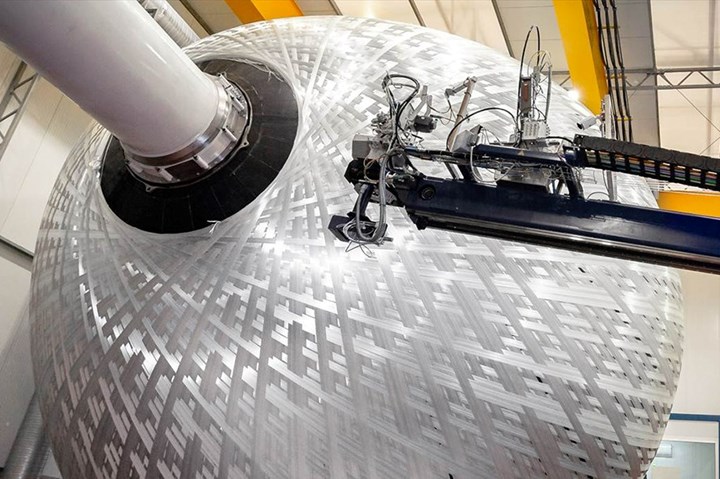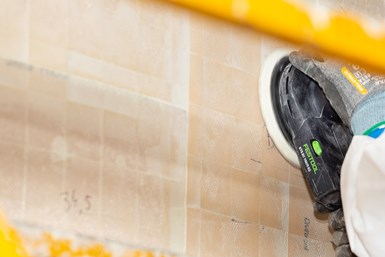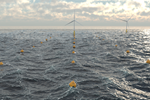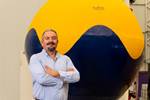CorPower Ocean partners with Diab for full-scale wave energy converter
Diab provides foam core, engineering support to enable CorPower’s first commercial-scale composite filament-wound WEC.

Wave energy converter (WEC) developer CorPower Ocean (Stockholm, Sweden) announces that it has partnered with subsea composite specialist Diab (Laholm, Sweden) for the construction of its first commercial scale WEC.
The ocean energy developer is currently fabricating its next generation C4 WEC, with dual build-out operations in Sweden and Portugal. Part of the flagship HiWave-5 Project, the WEC will ultimately join a four-system wave energy array, located off the coast of Aguçadoura in Portugal, forming one of the world’s first grid-connected wave farms.
Following several months of process characterization on one-fourth scale models, CorPower Ocean says it is now nearing completion of the first commercial scale hull at its Portuguese base in Viana do Castelo.
The site is also demonstrating the firm’s “mobile factory” concept designed to enable rapid roll-out of WEC hulls in port facilities near wave energy sites across the globe.
A key element to the hull’s sandwich structure involves the core material, which provides strength and stiffness. Produced by Swedish firm Diab, the Divinycell H grade material is said to bring benefits including high strength, durability and impact resistance combined with light weight and buoyancy performance properties.

“Diab’s technology is an ideal match for our composite hull structure, meeting all requirements with relevant certifications,” says Miguel Silva, CorPower Portugal managing director. “The Divinycell H sandwich composite is particularly well suited to WEC devices being designed specifically to withstand major fatigue, slamming and impact loads. Other important features include excellent adhesion strength and chemical resistance, with low water absorption and strong thermal insulation.”
Diab has been supporting the development of subsea applications for more than 50 years, including high demand structural and buoyancy solutions for civil and defense sectors. During its latest partnership with CorPower Ocean, Diab provided structural engineering support, including analysis of loads and stresses exposed to the hull, to ensure the correct selection of core materials and laminates for the composite structure.
According to Lars-Magnus Efraimsson, Diab segment manager, Divinycell H has a proven track record in virtually every application area where sandwich composites are employed, including the marine, land transportation, wind energy, civil engineering and general industrial markets. He says, “We are pleased to be expanding our portfolio in the subsea sector working with a fellow Swedish outfit and one of the leading wave energy developers. It’s always a pleasure to work with firms like CorPower Ocean which share our passion for innovation, as we continually explore new ways to improve our offering and make our clients’ products stronger, lighter and smarter.”
Related Content
-
Hexagon Purus opens new U.S. facility to manufacture composite hydrogen tanks
CW attends the opening of Westminster, Maryland, site and shares the company’s history, vision and leading role in H2 storage systems.
-
RTM, dry braided fabric enable faster, cost-effective manufacture for hydrokinetic turbine components
Switching from prepreg to RTM led to significant time and cost savings for the manufacture of fiberglass struts and complex carbon fiber composite foils that power ORPC’s RivGen systems.
-
Drag-based wind turbine design for higher energy capture
Claiming significantly higher power generation capacity than traditional blades, Xenecore aims to scale up its current monocoque, fan-shaped wind blades, made via compression molded carbon fiber/epoxy with I-beam ribs and microsphere structural foam.

.jpg;width=70;height=70;mode=crop)














